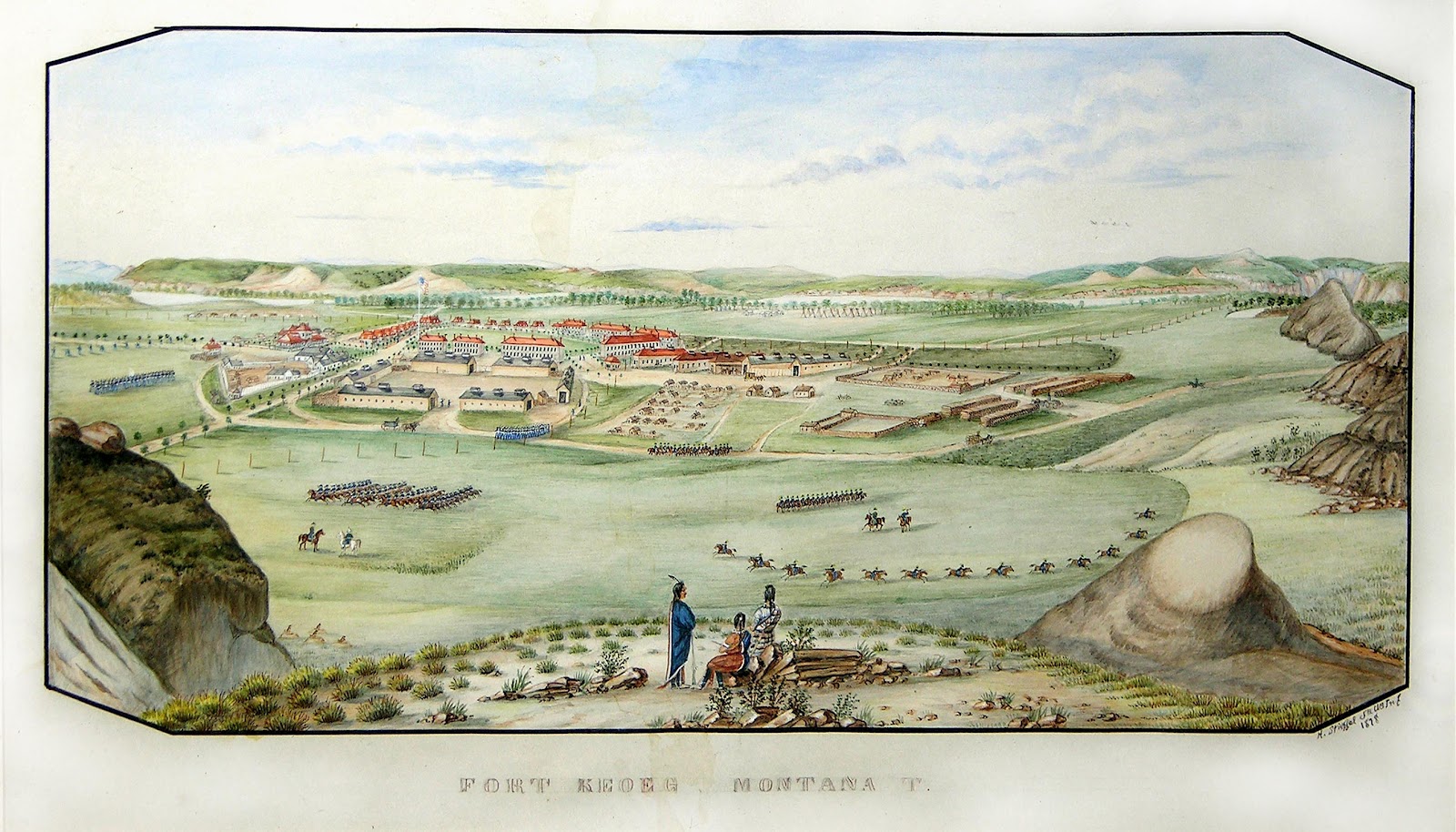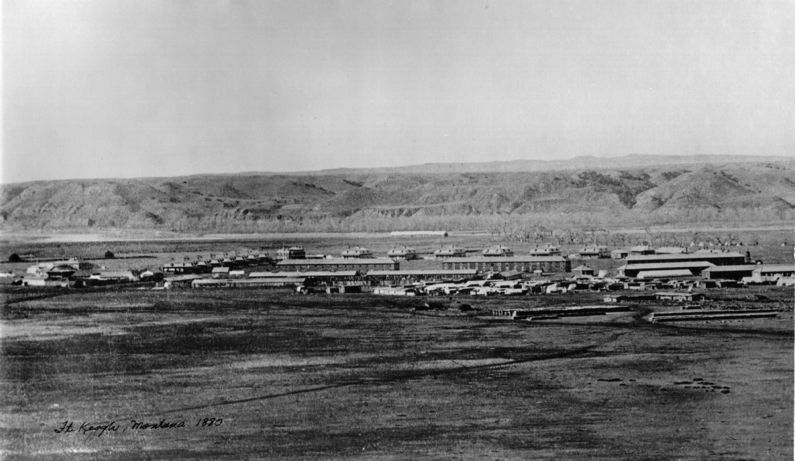
Fort Keogh: A Montana Sentinel Through War and Transformation
On the vast, windswept plains of Eastern Montana, where the Yellowstone River carves its path towards the Missouri, stands a site steeped in the dramatic, often brutal, history of the American West. Today, Fort Keogh is a leading agricultural research station, a testament to scientific innovation and sustainable ranching. But beneath its modern purpose lies a foundation built on cannon smoke, cavalry charges, and the desperate struggle for survival that defined the Indian Wars. It is a place where the past whispers from the rustling prairie grasses, telling tales of figures as legendary as Sitting Bull and Chief Joseph, and a commander whose iron will shaped the destiny of an empire: General Nelson A. Miles.
Fort Keogh is more than just a historical landmark; it’s a living palimpsest, a document written and rewritten by the forces of conflict, expansion, and adaptation. Its story begins in the aftermath of one of the most infamous battles in American history, and evolves into a symbol of how the West, and indeed the nation, continually reinvents itself.
The Genesis of a Frontier Outpost: Post-Little Bighorn

The year is 1876. The shockwaves of Lieutenant Colonel George Armstrong Custer’s catastrophic defeat at the Battle of the Little Bighorn are still reverberating across the nation. The government’s resolve to bring the Plains tribes under control hardens, fueled by public outrage and a desire for vengeance. It became clear that a permanent, strategically located military presence was essential to assert federal authority over the "unceded" territories of the Lakota Sioux and Northern Cheyenne.
Enter Brigadier General Nelson A. Miles, a man whose career was forged in the crucible of the Civil War and who possessed an unyielding determination. Dispatched to the Montana Territory, Miles recognized the strategic importance of the confluence of the Tongue and Yellowstone Rivers. This location offered a natural defensive position, access to water and timber, and a vital logistical hub for operations against the remaining free-ranging tribes. In August 1876, Camp Tongue River was established, quickly renamed Fort Keogh in honor of Captain Myles Keogh, one of Custer’s officers killed at Little Bighorn.
Under Miles’s command, Fort Keogh rapidly became the operational heart of the U.S. Army’s relentless campaign to pacify the Northern Plains. Miles, known for his relentless pursuit and his innovative winter campaigning tactics (earning him the Lakota nickname "Bearcoat"), understood that traditional military approaches were ill-suited to the vast, unforgiving landscape and the highly mobile warrior societies he faced. He equipped his troops with sleds, snowshoes, and heavy buffalo coats, turning the harsh Montana winters, which traditionally brought a halt to warfare, into an advantage.
The Crucible of Conflict: Miles’s Campaigns
The years following Fort Keogh’s establishment were a period of intense and often brutal conflict. From his base at Keogh, Miles launched a series of campaigns that would ultimately break the resistance of the Northern Plains tribes. His targets included some of the most iconic figures of Native American resistance.
In the winter of 1876-1877, Miles pursued the Lakota and Cheyenne. His troops engaged with Sitting Bull’s and Crazy Horse’s followers, forcing many to surrender or flee to Canada. Though Sitting Bull himself would not surrender until 1881 at Fort Buford (following years of exile), the constant pressure exerted by Miles’s forces from Keogh was a significant factor in the eventual capitulation of many bands.
A particularly poignant episode directly linked to Fort Keogh was the pursuit and eventual surrender of Chief Joseph and the Nez Perce in 1877. After a heroic 1,170-mile flight across four states, attempting to reach sanctuary in Canada, the exhausted Nez Perce were intercepted just 40 miles short of the border by Miles’s troops, who had ridden north from Fort Keogh. Chief Joseph’s famous surrender speech, "From where the sun now stands, I will fight no more forever," marked a tragic end to one of the most remarkable military retreats in history, a retreat thwarted by the very forces emanating from Keogh.
Another critical engagement involved the Northern Cheyenne under Chiefs Dull Knife and Little Wolf. After escaping from a reservation in Indian Territory (Oklahoma), they attempted to return to their Montana homelands. Miles’s troops from Fort Keogh were again instrumental in their pursuit, culminating in the surrender of Little Wolf’s band at the fort in 1879. These Cheyenne, who had endured immense hardship and fought with incredible tenacity, were eventually allowed to remain in Montana, forming the basis of the Northern Cheyenne Indian Reservation.

These were not merely military victories; they were the final, agonizing chapters in the centuries-long struggle for control of the American continent. Fort Keogh stood at the epicenter of this clash, a symbol of federal power projected onto a landscape that had, for millennia, been the exclusive domain of Native peoples. The fort served as a supply depot, a hospital, a communication center, and a base for some of the most impactful military operations in the history of the Indian Wars. It was, in essence, the sharp end of Manifest Destiny.
Beyond the Battlefield: A Shifting Frontier
As the 1880s progressed, the nature of the frontier began to change. With the major Native American resistance quelled and the tribes confined to reservations, the military’s role shifted. Fort Keogh transitioned from an active combat post to a supply and remount station. The cavalry still needed horses, and the vast ranges surrounding Keogh were ideal for breeding and training them. The fort became home to a significant remount depot, ensuring a steady supply of mounts for the U.S. Army.
But another force was sweeping across the plains: the cattle industry. The vast, unfenced grasslands that had once sustained millions of buffalo, and then the military’s horses, now beckoned to cattle barons. The open range era was booming, and Miles City, just a few miles from Fort Keogh, quickly became a quintessential cow town, a major shipping point for cattle heading east on the Northern Pacific Railroad.
The fort itself played an interesting, albeit indirect, role in this new economic landscape. The presence of the military provided a degree of stability and protection, and the government’s need for beef contracts created a market for local ranchers. Some former soldiers, upon discharge, even turned to ranching themselves, contributing to the burgeoning cattle industry. Fort Keogh, though still a military post, was becoming increasingly intertwined with the economic development of the region.
A New Purpose: From Garrison to Grazing Science
The turn of the 20th century brought further transformation. The Spanish-American War and the Philippine-American War shifted America’s military focus overseas. The need for numerous frontier outposts diminished. In 1907, after three decades as a vital military installation, Fort Keogh was officially decommissioned as an army post.
However, its story did not end there. Recognizing the agricultural potential of the vast tract of land associated with the fort, the U.S. Department of Agriculture (USDA) took over the property in 1908. Thus began Fort Keogh’s second, equally significant, chapter: as a center for livestock and range research.
Today, Fort Keogh is home to the USDA Agricultural Research Service (ARS) Miles City Livestock and Range Research Laboratory (LARRRL). This institution, spanning over 55,000 acres, is dedicated to conducting cutting-edge research aimed at improving the sustainability and profitability of beef production on the Northern Great Plains. The work here is diverse and impactful, focusing on areas such as:
- Beef Cattle Genetics: Developing more efficient and resilient cattle breeds adapted to the challenging environmental conditions of the Northern Plains. This includes research into feed efficiency, disease resistance, and reproductive performance.
- Range Management: Studying sustainable grazing practices, understanding the ecology of rangelands, and developing strategies to maintain biodiversity and productivity in a changing climate.
- Forage Production: Researching methods to enhance the quality and quantity of forage available for livestock, including drought-resistant varieties and improved pasture management.
- Animal Health and Welfare: Investigating ways to improve the health and well-being of cattle, reducing the need for antibiotics and promoting humane practices.
The transformation is profound. The land that once echoed with the thud of cavalry hooves and the crack of rifles now hums with the quiet efficiency of scientific inquiry. The descendants of the buffalo, once hunted to near extinction, are now studied to understand their grazing patterns and ecological role. The very ground where fierce battles for land and sovereignty were waged is now being managed to ensure its long-term health and productivity for future generations.
The Enduring Legacy
Fort Keogh stands as a powerful symbol of the American West’s complex and often contradictory history. It represents the clash of cultures, the relentless march of westward expansion, and the subsequent evolution of land use and purpose. The ghosts of cavalrymen and Native American warriors undoubtedly still walk these plains, their stories intertwined with the modern scientists who now work to feed a nation and sustain a fragile ecosystem.
The fort’s buildings, some dating back to its military days, serve as a tangible link to its past. The officer’s quarters, the barracks, and the stables, though repurposed, remind visitors of the human drama that unfolded here. They stand as silent witnesses to the struggles, the sacrifices, and the incredible resilience of all who lived and fought on this land.
In a broader sense, Fort Keogh embodies the continuous cycle of destruction and creation that has shaped the American narrative. From a military outpost designed to subjugate, it has evolved into a center for innovation dedicated to sustenance and sustainability. It reminds us that history is not a static collection of facts, but a dynamic force that continues to shape our present and influence our future. Fort Keogh is not just a place where the Wild West was "won"; it’s a place where the West continues to be won, day by day, through scientific endeavor, stewardship, and a deep respect for the land’s enduring power.


